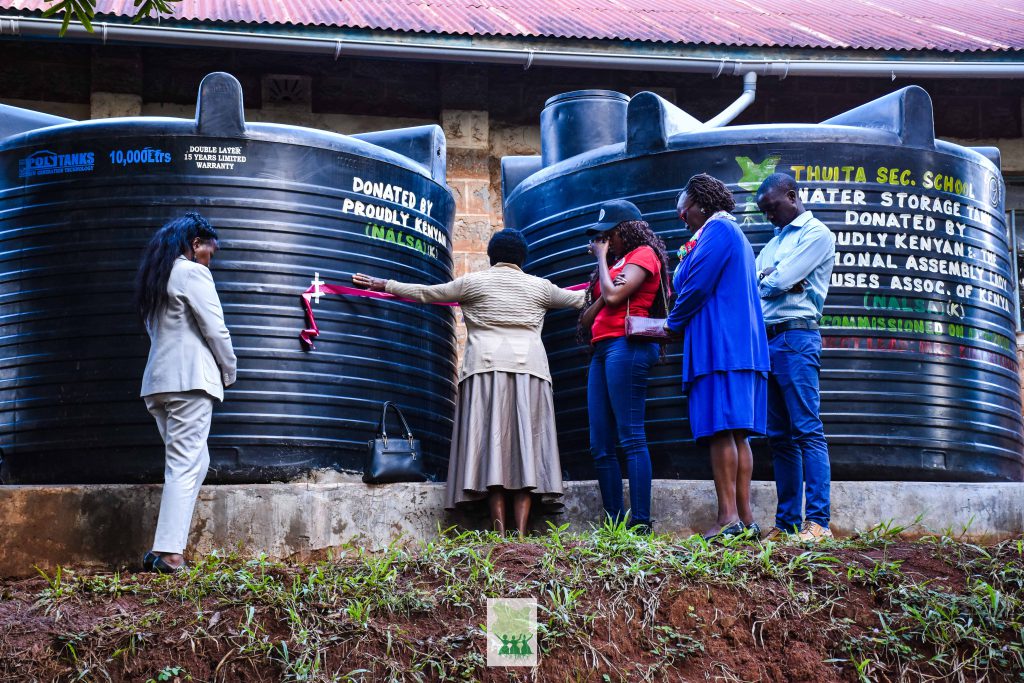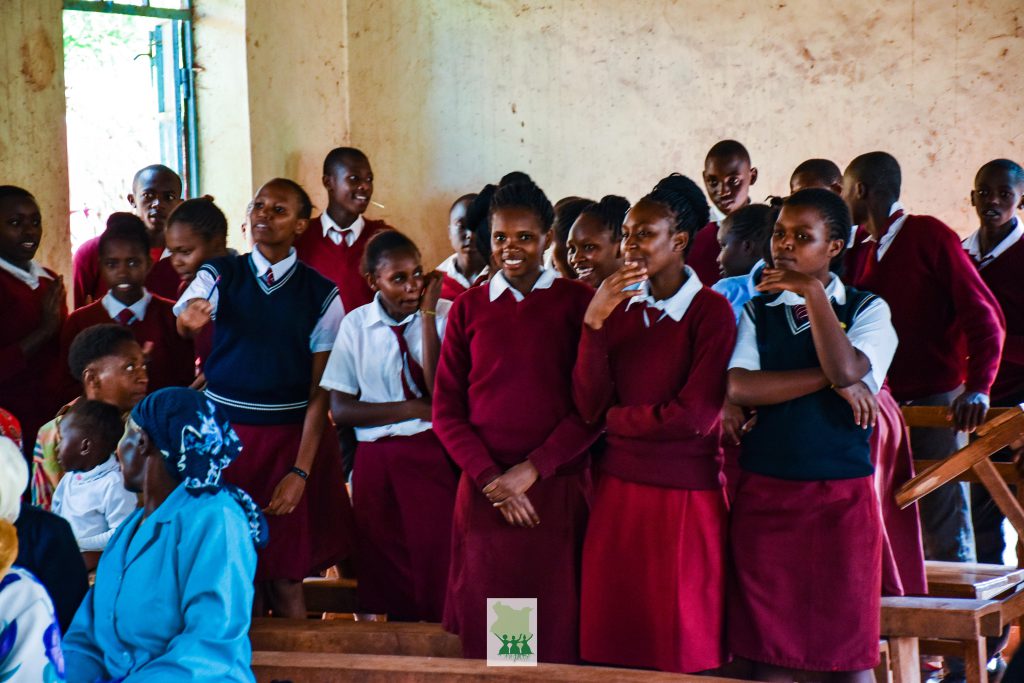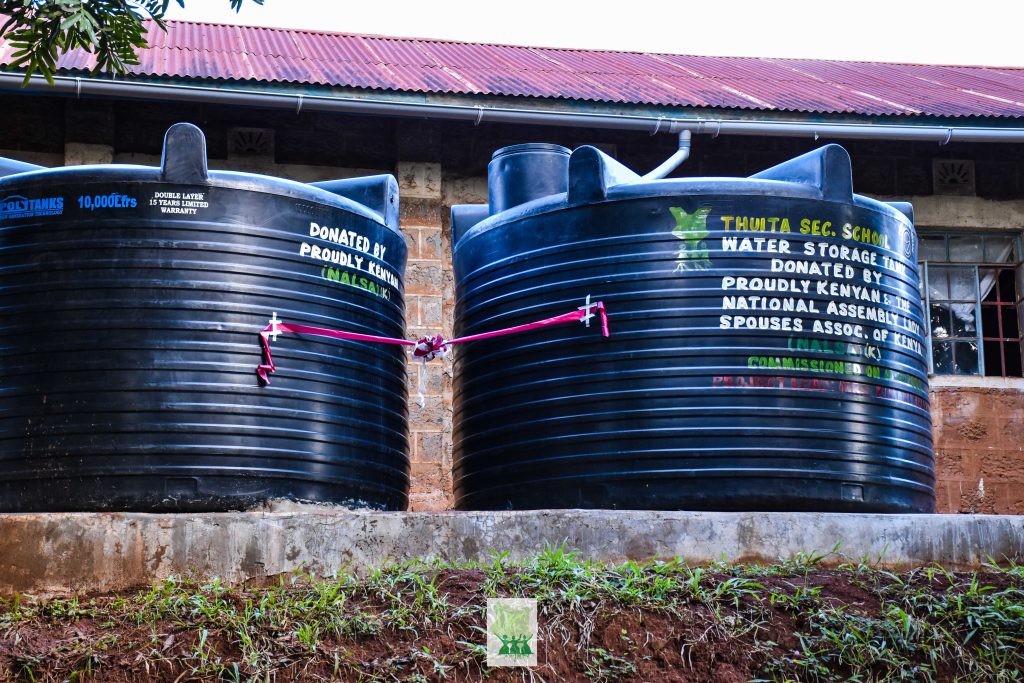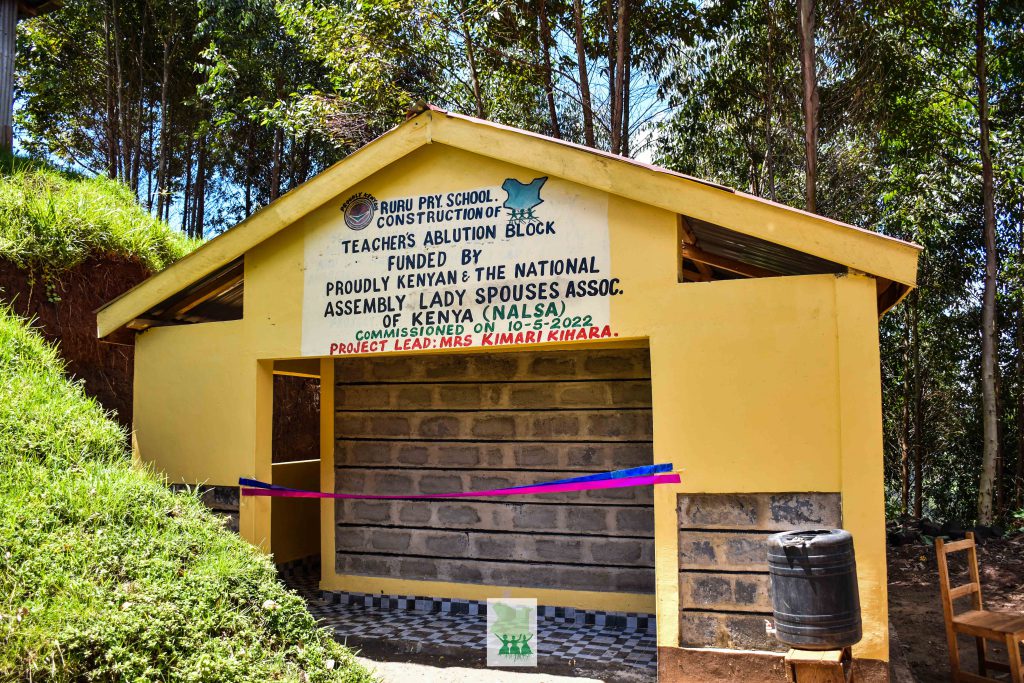THUITA AND RURU AREAS RISING ABOVE CHALLENGES.

Mudslides, a common occurrence in the hilly region of Mathioya, washed away the only teacher’s toilet building in January this year. For a while teachers at the school had to be content with utilizing toilet facilities belonging to the school’s neighbors. The Centre for Disease Control and Prevention(CDC) describes landslides as an occurence where masses of rock, earth, or debris move down a slope. Debris flows, also known as mudslides, are a common type of fast-moving landslide that tends to flow in channels. Still in Mathioya, 20 Km away from Ruru Primary is Thuita Secondary school where students are not just students. They are the key human resource that is involved in fetching water for the school daily. By the time they settle down for classes, they are so tired they can not concentrate. Can they really compete with compatriots from established schools?
Both environments are not where we would wish teachers and students to operate in as it directly affects their performance.

Background
Ruru Primary School in Mathioya Constituency has a population of 250 pupils and 15 teachers. Most students are either born of tea farm owners or tea pickers. In fact the school was founded in 2014 after the local tea buying centre and other neighbors donated land for construction of the school. Additionally, the topography of the area is so hilly no doubt a landslide or a mudslide are an inevitable occurrence.
Thuita Secondary School is a public sub-county secondary school. It is a mixed day school. What is perplexing is that students upon arrival in the morning are involved in fetching water before settling down for classes. The water is normally used for cooking and cleaning.
In this background, Priscilla Kimaru, NALSA(K) representative for Mathioya Constituency, stepped in to alleviate the suffering of teachers and students from Thuita Secondary and Ruru Primary. Her interventions through Proudly Kenyan sponsorship has established a water catchment system complete with two 10,000 litre water tanks and roof gutters for the school. Ruru Primary on the other hand has a modern facility built to cater for the teachers,isn’t it a relief especially for the teachers? An interesting bit about the project is that both technical and casual labor was sourced locally at least to ensure the money trickles down to gain the area economy.
Step by step, NALSA(K) members are determined to improve the sanitation situation in their surroundings, beginning with our public schools. The NALSA(K) catalysed change is happening not in Mathioya alone but also around the country in other constituencies like Turkana North, Mbeere North, Mbeere South and more constituencies to come.
Launch
During the launch on May 10, Dickson Muiruri expressed, “this project is a relief, teachers no longer have to walk to the neighbour in order to relieve themselves. One could see the comfort the new structure brings to the school. Mrs Kimaru in her speech showed gratitude to Proudly Kenyan for agreeing to carry out the project and alleviate the suffering of the teachers in both schools.” “Students and teachers can now focus on education, the main reason to be in a school,” Mrs Kimaru continued.
She concludes her remarks by stating ” I am happy for the women who encourage me to stand by me. To the young girls present today, use examples like Tiffany (Organizing Secretary, Proudly Kenyan) for encouragement”

Basis of the project
The UN SDG goal number six on water and sanitation links sanitation as significant to good health because many diseases are linked to hygiene and, therefore, preventable.
Areas with no latrines have often resorted to open defecation. It is NALSA(K) ‘s Objective to facilitate preserving our environment for posterity. Therefore the representative of Mathioya has come in handy to avert what would have been an environmental disaster.
The difference in access to adequate sanitation between urban and rural environments still persists. An essential vision 2030 goal for Kenya.
Conclusion
Attention on education matters has been focused on students hence forgetting that teachers and non-teaching staff are the enablers of an efficient education system. Such initiatives by Mrs Kimaru ensure teachers and students, especially from remote areas, are included and not overlooked. With the two projects complete and launched, the two schools’ challenges have been cut down. A lot of time was inevitably being wasted.
It is hoped that this initiative by the Mathioya constituency will go on to boost attendance, morale and performance in both Thuita Secondary and Ruru Primary.

By Brian Anyanzwa
Photography by Julia Laval
